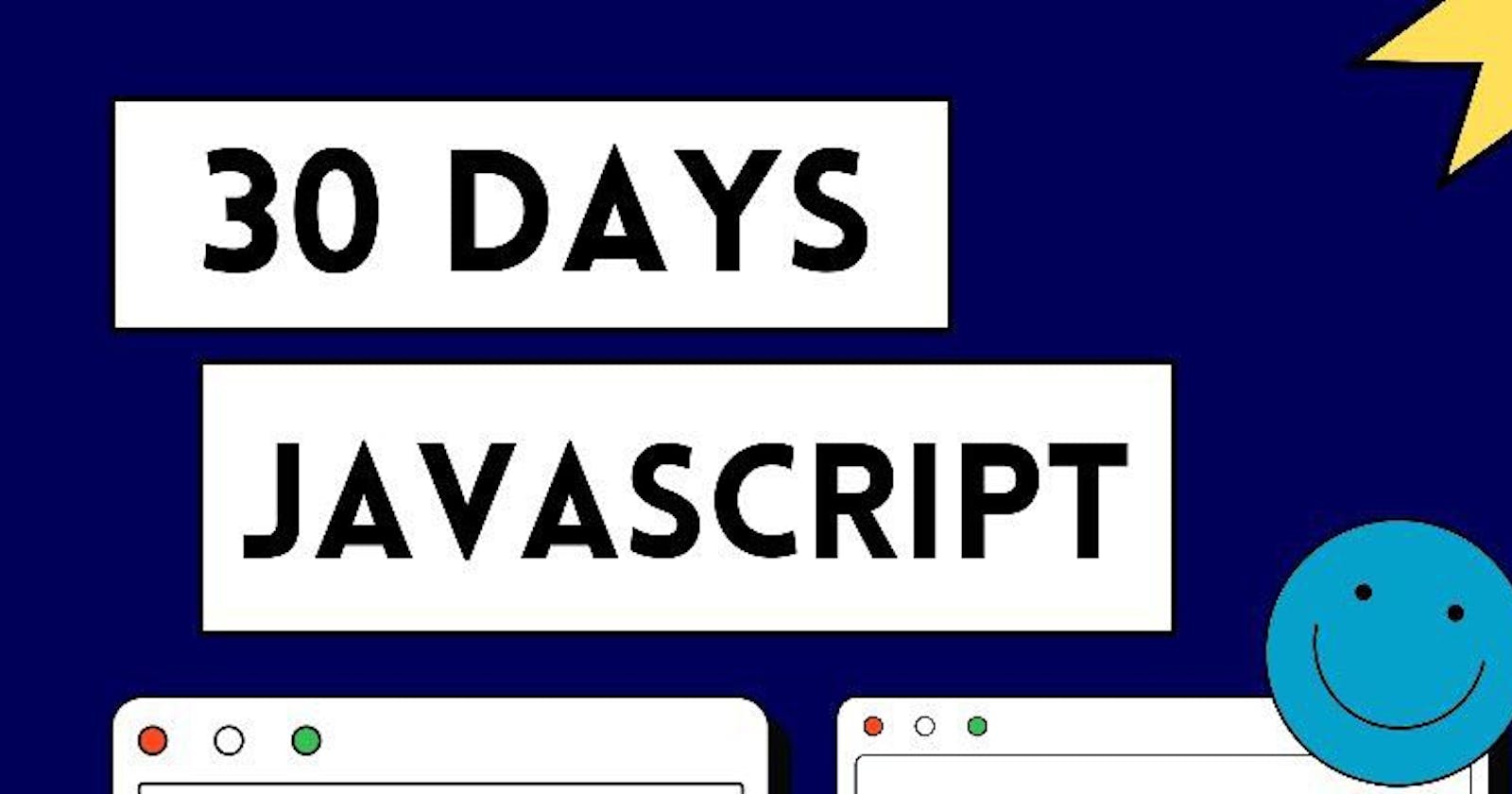Greetings Everyone, Starting Today, 29th April 2023, I'm publicly committing to "30 Days Javascript" - an in-depth blog series covering the fundamentals of #JavaScript, demystifying the language that powers the modern web. from variables and data types to APIs and error handling, over the next 30 days, we'll cover everything from the very basics to even advanced concepts of the language. hence if you are an aspiring developer or programmer aiming to gain proficiency in the language, do follow along! :)
But WHY am I even doing this? to be honest, ever since I started writing technical blogs I always wanted to do this kind of explainer series. I believe that articulating my knowledge of the language, and exploring even more depths of it as I prepare the threads is something that'll assist me both, as a technical writer as well as a web developer while at the same time also giving some value to the aspiring javascript developers. thanks <3

Day 01 JavaScript Introduction
Welcome to Day 1 of 30 Days JavaScript! Today, I'll be introducing you to the world of JavaScript and its data types and variables. Get ready to dive into the exciting world of programming!
JavaScript is a powerful language that is used for creating dynamic and interactive web pages. It is an object-oriented language that is designed to run in web browsers.
In JavaScript, there are 7 different data types: string, number, boolean, undefined, null, symbol, and object. Each of these data types is used to store different types of data.

A variable is a container for storing data values. In JavaScript, variables are declared using the "var", "let", or "const" keyword, followed by the variable name.
The "var" keyword is used to declare a variable globally or locally in a function. The "let" and "const" keywords are used to declare block-scoped variables.
You can assign a value to a variable using the assignment operator "=".

JavaScript is a dynamically typed language, which means that the data type of a variable is determined at runtime based on the type of value that is assigned to it.
You can also change the value of a variable by assigning a new value to it.

In JavaScript, variables can hold any type of data, including strings, numbers, booleans, objects, and even functions.
It's important to choose descriptive variable names that make it easy to understand the purpose of the variable.
In summary, today we covered the basics of JavaScript data types and variables. Stay tuned for Day 2, where we'll be diving deeper into operators and expressions!
Don't forget to follow me for more JavaScript in 30 content and feel free to share your thoughts and questions in the comments below. Thanks for tuning in!
